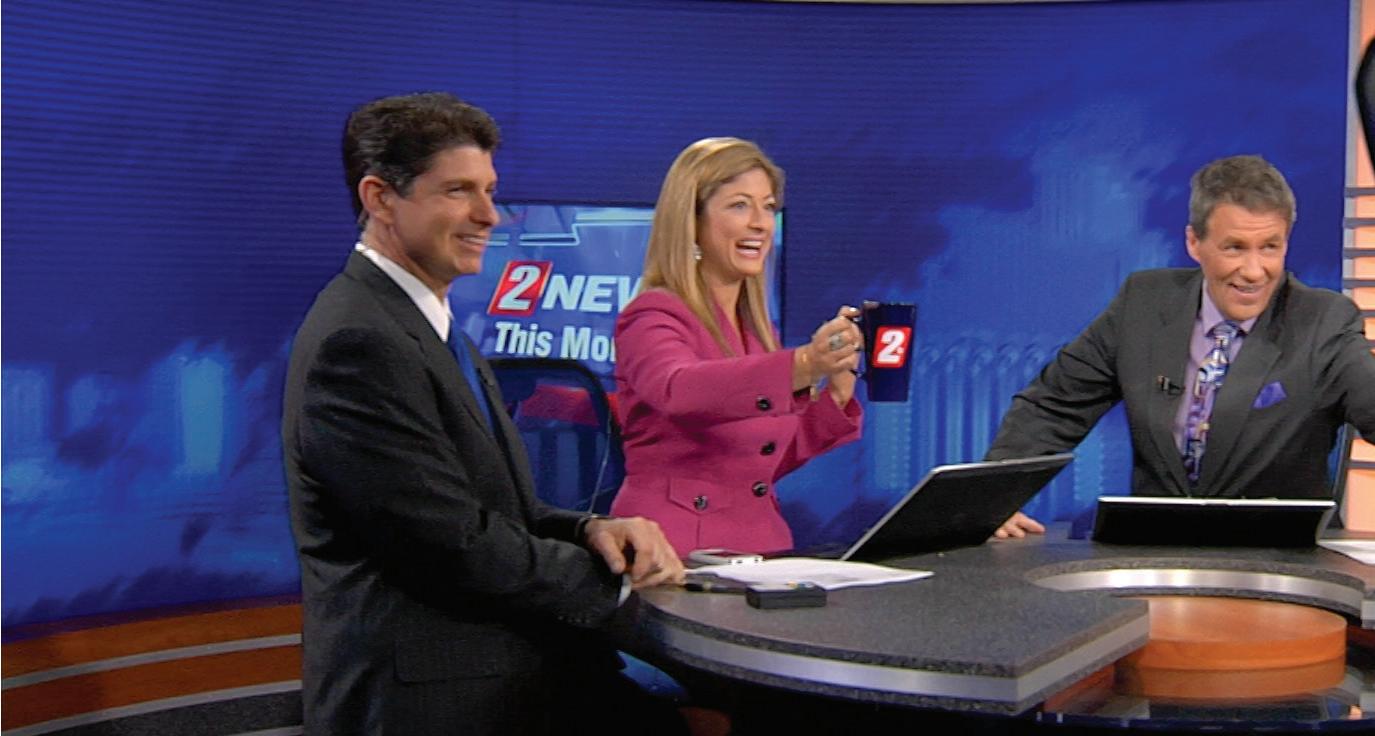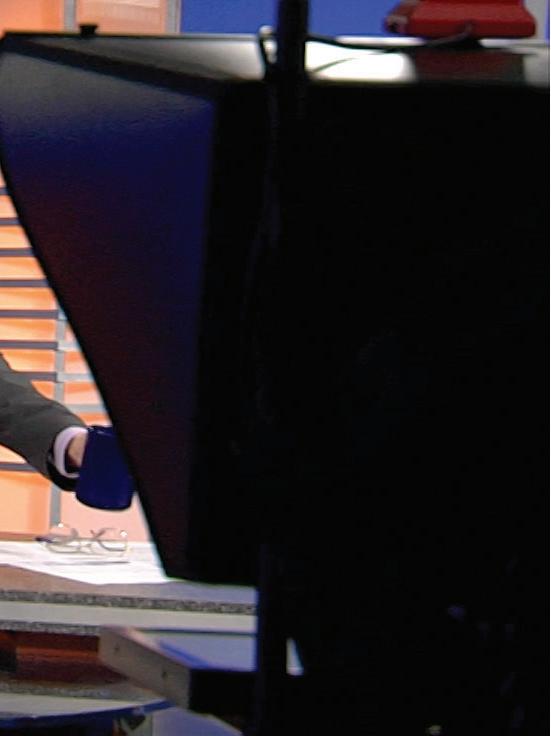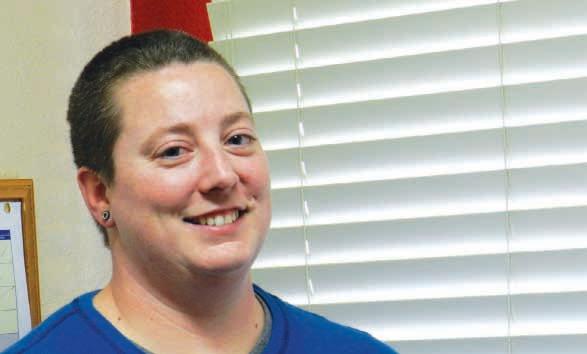
8 minute read
Arts&Culture
from April 25, 2013

PhoTo Provided by KrNv
Advertisement
KRNV has brought local television news into the 21st century by including viewers in the conversation.
by Kyril Plaskon
The State of the News Media 2013 report can be found at http:// stateofthemedia.org.
Reno’s broadcast signals are expanding dramatically. In the past two years, traditional and non-traditional broadcasters have increased local content by four hours a day and are using cutting edge technology.
“We are the only station in the world that does it in this format,” said KRNV news director Matt McConico. His News 4 Forum at 11 a.m. with Melissa Carlson uses a program called “Google+” and Google’s automatic switching technology to bring anyone into a live conversation on TV.
“If you want to be on TV, just contact Melissa, and we will get you on,” McConico says.
He wants it to be comfortable: “It’s like sitting down at the bar and talking to people.”
But, like most new technology, not everyone is ready to belly-up and drink the super-spiked techno Kool-Aid.
“It’s difficult to get people to want to put their face on TV and say, ‘This is my thought, this is my belief,” McConico says. “Getting people to change habits is difficult.”
In TV, success is gauged by how many people watch. It started just seven months ago, and McConico says KRNV’s Forum has about half of viewers of the traditional 11 a.m. newscast on KOLO (channel 8). KOLO expanded its 11 a.m. newscast approximately two years ago, but its expansion from 11:30-noon is mostly national news, not hyperlocal like KRNV can do. KOLO’s general manager did not respond to emails requesting an interview.
The local air-wave expansion also includes internet-based broadcasters. LoadedTV.com kicked off a Reno morning show, Wake Up Call, a year ago, operating inside the bar at Bonanza Casino from 9-10 a.m. Hosts and guests talk about close-to-home topics and incorporate on-screen social media. The challenge is getting advertising money.
“Here in Reno it has been a battle trying to explain the technology to people,” executive producer Stewart Campbell says. “People are more schooled in radio and television here. But the internet and social TV, to many people here, it is like, ‘What is it?”
Instead of his signal going to a tower at the top of Slide Mountain like traditional broadcasts, the signal


goes to a computer, which makes it available wherever there is internet.
While local broadcasts are expanding, the audience is increasingly split by internet, cable, gaming and other entertainment. According to the Pew Project for Excellence in Journalism “State of the News Media 2013” report, traditional broadcast TV audiences have fallen 5 percent in 5-7 a.m. broadcasts, 1.9 percent at noon, and down 7 percent in 5-7 p.m. Overall, in the past six years, the number of people watching news has dropped 6 percent, 1 percent every year.
The only place where audiences are climbing is before the crack of dawn, 4:30 a.m., according to the report. Now, Reno has that too.
“Right now, this is our big move,” said KTVN’s general manager Lawson Fox. His new 4:30 a.m. newscast replaced a national news program. “We think there is a great opportunity to serve viewers. We know local news has more interest than a national product.”
The Radio Television Digital News Association survey in 2011 found a record expansion of local news nationwide. Meanwhile, Pew’s survey of viewers this year showed 31 percent of people who have stopped watching TV news say they are leaving because it no longer provides the news and information they had grown accustomed to.
So, the audience is shrinking and the amount of product is rising: more supply, less demand. Money is getting tighter, too. From 2006 to 2011, broadcast revenue has declined 36 percent, according to the Pew report.
“In a more competitive news environment in which revenues are shrinking you would expect more local news for all of these reasons, I think,” said David Ryfe, author of Can Journalism Survive? and associate professor at UNR’s Reynolds School of Journalism.
One of the reasons for more local news, Ryfe says, is that it’s cheaper to use the same staff stations already have or hire cheap local staff to repeat news. “You have to qualify that statement by saying that ‘news’ is relative. What we are really saying is that there will be more weather, sports and talk, not more gathering of new information, accountability journalism and the like.”
A one-day analysis of all four stations and their five expanded local broadcasts showed LoadedTV was all local content, but all talk and no pre-produced content. KOLO’s expansion at 11:30 included only national stories that were provided by the network, sponsored interviews, viral internet videos, celebrity news and weather. KRNV’s Forum at 11, while it had the potential to be local, most of the live guests were not identified as local, and it included mostly national content with a celebrity interview that hyped pain killer medicine. KRNV’s other expanded newscast at 4 p.m. featured a live local report.
KRNV was the only station to feature sports and a local interview that did not appear to be sponsored advertising content. McConico says that broadcast has been the most watched in its time period since it started a year ago.
“Jim Rogers is the owner of channel 4 in town, and he is committed to local news in a way that other owners perhaps would not be. For instance, he has put on the air a few state politics-oriented talk shows that would not air on most news stations. So that is distinctive.”
Of all the local expanded newscasts, KTVN’s 4:30 a.m. had the longest block of hard local news at seven minutes, and most of it wasn’t repeated until almost an hour later. But the bright spot in KTVN’s expansion is not evidenced by the content analysis. It is who is doing the news and what their duties are later in the day.
KTVN didn’t simply do more news with the same staff as Ryfe says many local stations are doing these days when expanding. KTVN hired a new anchor and seasoned reporter, Neda Iranpour. KTVN’s general manager Lawson Fox says she will be reporting a few enterprise stories each week like her co-anchor John Potter already does.
“What is posted on the wall down there [in the newsroom] is to reflect what is happening in the community and to cover or amplify what people are interested in that day,” Fox said. “[Viewers] should learn something about it. Of course we need to do stories that have light shed upon them.”
That “light” is key for several reasons, one being that lack of that light makes it difficult for the public to participate in democracy.
“I think we over-estimate the ability of the average citizen to keep up with, understand, and make informed decisions about public issues—even in the best of times,” Ryfe said. “Less serious content makes that harder.”
“The lack of local content means that there are fewer reporters holding government accountable for its actions,” Ryfe said. “Regardless of whether any particular citizen is informed by this sort of news, it is a vital role that journalism plays as an institution.” Ω


DINE THE DISTRICT FOOD TOUR
ON MAY 4TH FROM THE RN&R AND THE RIVERWALK DISTRICT!

WIN TICKETS
TO ENTER:
• Send an e-mail with “DINE THE
DISTRICT” in the subject line to contest@newsreview.com • Include your full name, birth date and day phone • Deadline to enter is Friday, April 26, 2013 • Winners will be notified by e-mail and phone on April 29, 2013
Knowing that you’re not alone
“i know what it’s like to feel marginalized or invisible and the level of anxiety or confusion you can have when you want to get something as simple as a checkup. at hopes, we offer clinical, psychological and supportive services not only for the community at large, but also for people who are not necessarily the ones everyone else wants to serve. it’s difficult to go to a regular, primary care doctor and get the kind of care we provide. there are resources out there, but not everyone is aware of them. We try to use all of our services to really bolster people inside and out – medically, mentally, whatever we can do – to help them find what they need so they can feel productive and enjoy their lives. having a positive outlook and feeling capable opens the door for more opportunities and can have a significant, powerful change on health outcomes. Knowing that you’re not alone, that there are people who understand and want to help you and who will listen to you if you just want to talk - that’s huge. it’s hard to find quality resources. that’s something we are really good at. i like to think we go above and beyond. Being able to positively impact people’s lives, in ways that really make a difference, that’s the biggest thing for me.”
• Primary medical care • chronic disease management • hiV, heP c, std testing • mental health counseling • substance use counseling • suPPort grouPs
NORTHERN NEVADA HOPES
Your partner in health
We accept most insurances, medicaid, medicare & the uninsured
MONDAY – THURSDAY: 8AM – 7PM • FRIDAY: 8AM – 5PM 580 W 5TH ST., RENO (775) 786-4673 • NNHOPES.ORG
BEST PRICE BYMAY 7
TAHOE














